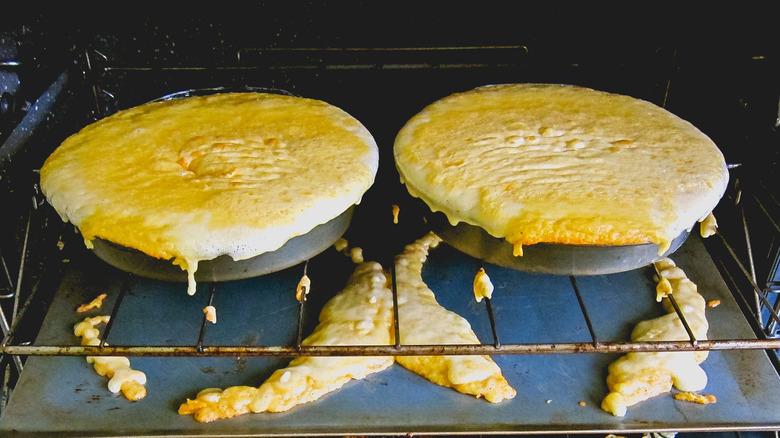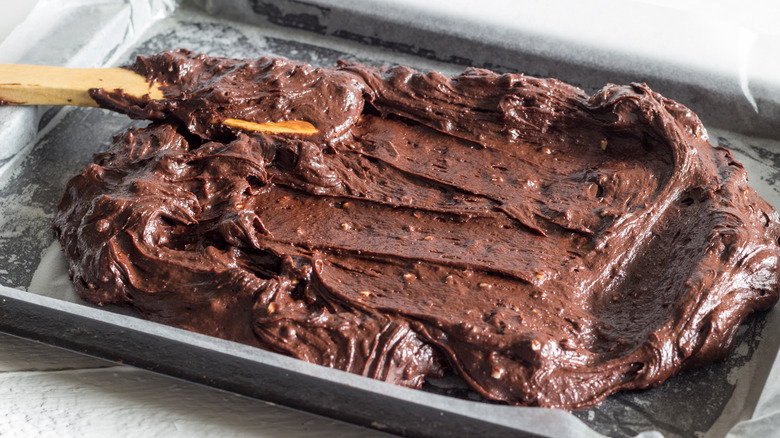The Simple Reason Your Cake Overflowed (& How To Rescue It)
Whether you're new to baking or have been doing it for some time, you should know that there is very little room to get playful when anything involving dough is involved. Baking is a combination of chemistry, biology, and physics, which means you must follow recipes very closely for them to turn out correctly. When it comes to baking a cake, one of the most important variables is the size of your pan.
Using a pan that isn't specified can make your cake batter thicker or thinner. This change in thickness will, in turn, have an impact on the way the batter cooks. A container that is too big will cause the cake to bake more quickly and a pan that is either too small or isn't deep enough, is most likely to cause the batter to rise and overflow. However, there are some exceptions to this, for example, coffee cakes aren't too heavily impacted by small changes in pan size because they don't rise as much.
How to prevent cake overflow or rescue it when it happens
Sponge cakes can't be treated the same way brownies and blondies are because the recipes for these particular desserts which include angel food, chiffon, and genoise, have been formulated to work with a specific pan size and shape. This means something as simple as a pan swap will need some math skills to work out. If your pan is larger than the one the recipe calls for, you'll need to raise the baking temperature by 25 degrees Fahrenheit and cut the baking time down by 25%.
So if you're swapping an eight-inch pan for a nine-inch one, make your oven 25 degrees hotter and if it calls for a baking time of 40 minutes, make that 30 minutes instead. But if you suspect your pan is too small, you can pour in heavier cake batter so that it fills the pan up to 2/3 of the way, and 1/2 of the way if you're working with sponge cake batter. Head off any messy accidents by laying a baking sheet underneath the cake pan. And if after all the precautions, the overspill does happen, just give the sides a quick trim to remove the excess batter and then ice or decorate the cake as you normally would.

